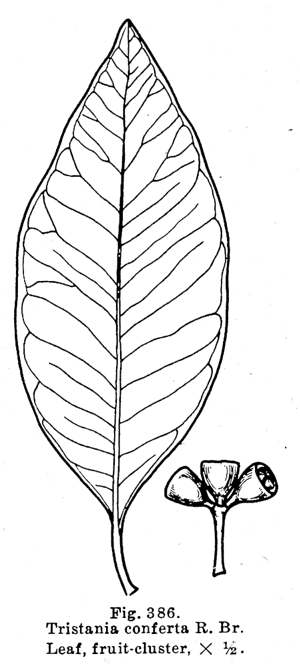Lophostemon confertus
 Brisbane box
Brisbane box

Closely related to Eucalyptus, Brisbane box (also called brush box) is a tough, useful tree with warm-colored smooth bark becoming rough toward the base. In its native habitat, in moist coastal gullies, it grows to over 100 feet and reaches many feet in diameter. A sample of the wood is likely to sink in water. A principal use is as a small, rugged street tree. Each flower has about five petals (white), is about an inch across, and has a distinctive appearance resembling a starfish from the way the stamens are arranged on radiating axes. The flowers are in cymes of seven, as are the seed capsules, which look very much like Eucalyptus. A comparison with any seven-fruited Eucalyptus will reveal the latter’s cymose ancestry. That the Eucalyptus flower represents a later stage of evolution is evidenced by its loss of petals. Crush a leaf and smell it; no hint of Eucalyptus.
Enter Wilbur Hall from the east to find six specimens in the courtyards. There are four more in the northwest courtyard. Two examples are at the intersection of Santa Teresa and Dueña streets, adjacent to Tresidder Union. The trees flower in June.
About this Entry: The main text of this entry is from the book Trees of Stanford and Environs, by Ronald Bracewell, published 2005. Name updated to L. confertus (Jan 2018, SP).



